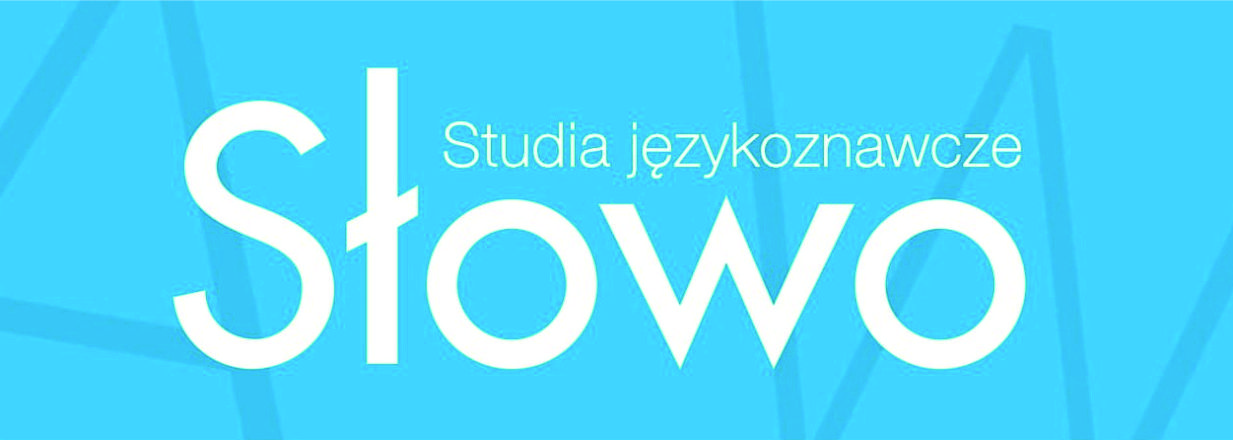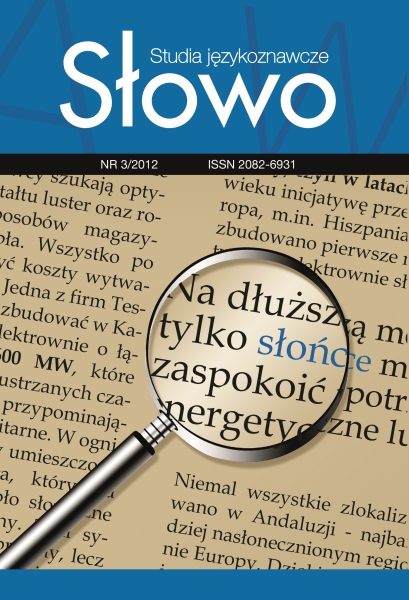Kwestie nacechowania w języku sportu
Abstrakt
Following the definitions offered by Birk & Birk (1990), the paper discusses the issues of slanting and charged language to be found in the sub-dialect form of sport-connected language. ‘While basing on the cognitive theory of language offered by R. Langacker, the paper presents the forms of charging found in various elements of sport-connected language. The forms of the charging elements, which are always dependent on the message author, are selected from the lexicon of some cognitively existing in-language personal semantic schema, which defines the semantic areas of each of the words and are subsequently applied by the message author, so as to illustrate his/her feelings in respect to a given sport-involving activity in the closest possible way. Additionally, the paper hints at the existence of possible connections between sport language and numerous forms of everyday speech claiming that one of the ways of ‘resurrection’ of everyday speech is its relative proximity to sport language.
Downloads
Bibliografia
Allport G., 1990, The language of predjudice [w:] Language Awareness, Fifth edition, red. Escholz,
Rosa & Clark, New York, s. 247-258.
Barcelona A., 2003, Introduction. The cognitive theory of metaphor and metonymy [w:] Metaphor and Metonymy at the Crossroads: A Cognitive Perspective, red. A. Barcelona, Berlin.
Bir P.N., Birk G.B., 1990, Selection, slanting and carged language [w:] Language Awareness, Fifth edition, red. Escholz, Rosa & Clark, New York.
Chłopek D., 2010, Landscape’ verbalized through English in translation into Polish. Semantic differences in the "'categorial"' similarities [:] Fórum cudzich jazykov, 2, red. R. Repka, Sladkovicovo, s. 25-38.
Chłopek D., 2009, Słowa „małe” i „stężone” (na przykładzie języka angielskiego) [w:] Przez słowo —w słowach — o słowach, red. T. Borutka, A. Węgrzyniak, Bielsko-Biała, s. 247-257.
Cockiewicz W., 1988, Komentarz transmisji sportowej w telewizji (charakterystyka składniowa) [w:] Studium z zakresu składni języka mówionego, Kraków.
Fife J., 1994, Wykłady z gramatyki kognitywnej. Wykład I [w:] Podstawy gramatyki kognitywnej, red. H. Kardela, Warszawa, s. 9-24.
Gorczyca W., 2000, Znaczenie i rozumienie w procesie recepcji i tworzenia tekstu obcojęzycznego, Warszawa.
Kalisz R., 1994, Teoretyczne podstawy językoznawstwa kognitywnego [w:] Podstawy gramatyki kognitywnej, red. H. Kardela, Warszawa, s. 65—76.
Krawczyk Z., 1997, Kultura fizyczna [w'] Kultura fizyczna, sport, red. Z. Krawczyk, Warszawa, s. 377-383.
Lakoff G., Johnson M., 1980, Metaphors We Live By, Chicago.
Langacker R., 2000, Grammar and Conteptualization, Berlin.
Langacker R., 2003, Model dynamiczny oparty na uzusie językowym [w:] Akwizycja w świetle Językoznawstwa kognitywnego, red. M. Dąbrowska i H. Kardela, Kraków, s. 28-115.
Polok K., 2007, Funkcje języka w języku sportu, „Język a Komunikacja”, 17, tertium, s. 143—154.
Polok K., 2006, Glottospoleczne elementy akulturacji. Od teorii do praktyki, Katowice.
Razran G., 1971, Mind in Evolution. An East-West Synthesis of Learned Behavior and Cognition, London.
Tworek A., 2000, Język sportu — próba definicji (analiza języka polskiego i niemieckiego), „Język a Komunikacja”, 1, tertium, s. 331-340.
Tworek A., 2002, Terminologia sportowa w „Nowym słowniku poprawnej polszczyzny PWN”, „Język a Komunikacja”, 4, tertium, s. 251-257.
www.90minut.pl
www.info-rugby.pl/
Pobrania
Opublikowane
Jak cytować
Numer
Dział
Licencja
Prawa autorskie (c) 2012 Słowo. Studia językoznawcze

Utwór dostępny jest na licencji Creative Commons Uznanie autorstwa – Użycie niekomercyjne 4.0 Międzynarodowe.


